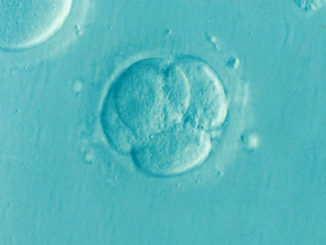It has often been pointed out that productivity of milch animals in India is very low. Besides the percentage of animals in milk as compared to breedable animals as a whole is very low. These facts have been repeatedly stated by basic Animal Husbandry Statistics from time to time. This is because there is deficiency of essential nutrients in ration of dairy animals. Many times animals having higher genetic potential produce way below their actual capacity primarily due to unbalanced feeds. The performance of Indian livestock is very low compared with that achieved by other countries in developing and developed world.
Sometimes one nutrient is fed in excess than required and other given in less amount than required. This many times leads to increase in cost of milk production causing loss to the farmers and many times affecting animal health and fertility. Animal scientists have reported that knowledge regarding balanced feeds is lacking among smallholders, therefore efficient extension system with proper advisory issued to the farmers from time to time is must. Priority should be given to feed resources that are available at the local level.
Table 1:- In-milk animals, total breedable population and average productivity
| Breedable animals (millions) | 2003 | 2007 |
| Indigenous cows | 60.15 | 59.23 |
| Crossbred cows | 14.06 | 15.55 |
| Buffaloes | 57.87 | 59.23 |
| In-milk animals( millions) | 2003 | 2007 |
| Indigenous cows | 27.63 | 28.25 |
| Crossbred cows | 8.17 | 9.46 |
| Buffaloes | 33.32 | 33.16 |
| In-milk animals as percent of total breedable population | 52 | 54 |
| Average milk production (Kg/animal/day) | 2003 | 2007 |
| Indigenous cows | 1.92 | 2.10 |
| Crossbred cows | 6.53 | 6.52 |
| Buffaloes | 4.24 | 4.44 |
Source: Indian livestock census 2003 and 2007
A balanced ration is the one which meets the need for carbohydrates, protein, fat, vitamins and minerals for animals available from dry and green fodders, concentrate feeds and other feed additives to help the animals maintenance, production and reproduction needs.
Ill effects of unbalanced feeds
- Reduction in milk yield
- Reduced growth and reproduction potential
- Calving intervals are increased but the lactation length is shortened
- Susceptibility to diseases like ketosis and milk fever
- Lowered profit for milk producers.
Quality of compounded feeds in ration of dairy animals have a major impact on ration and this factor varies from region to region.
Table 2. Nutrients requirement of metabolisable energy (ME), in Megajoule(MJ), and crude protein (CP) for maintenance of each cow according to body weight
| BODY WEIGHT KILOGRAM (KG) | ENERGY REQUIREMENTS MJ ME/DAY | PROTEIN REQUIREMENTS KG CP/DAY |
| 300 | 34.6 | 0.288 |
| 350 | 38.8 | 0.324 |
| 400 | 42.9 | 0.358 |
| 450 | 46.9 | 0.391 |
| 500 | 50.8 | 0.423 |
| 550 | 54.5 | 0.454 |
Table 3. Metabolisable Energy (ME) and crude protein (CP) for production per Kilogram of milk depending on fat content
| FAT CONTENT (PERCENTAGE) | METABOLISABLE ENERGY (MJ ME/KG OF MILK) | CRUDE PROTEIN (KG/KG OF MILK) |
| 3.4 | 4.9 | 0.081 |
| 3.6 | 5.0 | 0.082 |
| 4.0 | 5.3 | 0.085 |
Effects of feeding balanced ration
- Milk production increases and net daily income improves
Balanced ration supplies a complete blend of nutrients essential to maintain proper health of all body systems which results in enhanced milk yield. This in turn results in increased income and better milk quality in terms of fat content and solids-not-fat (SNF) percentage. However the impact of advisory services depends mostly on the animal type, its breed and lactation stage as well as the willingness of the farmer to listen to the experts.
- Milk production efficiency enhanced
Per kilogram amount of milk yield as a result of per kilogram dry matter intake is improved. This means that milk yield as a result of feeding the same content of feed increases per animal. Also balancing rations improves growth rate in young calves helping in early onset of sexual maturity and reducing the age at first calving.
- Microbial protein synthesis improves
Improvement in rumen fermentation efficiency and rumen microbial protein synthesis shows that rumen is working in a healthy manner and also results in cost cutting of feed as protein is an expensive ration component.
- Immune status of animals improves
Balanced feed saves the animal from various diseases and improves the working of various enzymes and several other cellular and structural proteins. Also antibody production improves and signs of nutrient deficiency disappear.
- Parasitic load of animals is reduced
Parasites consume the beneficial nutrients meant for animals affecting their fertility and productivity in addition to poor health and reduced growth. However improved immune status due to improved nutrition has a detrimental effect on parasitic load.
- Enteric methane emission reduced
This is an indication of better health of animal gastrointestinal tract and also beneficial for the environment in general.
Therefore giving balanced ration to the dairy animals serves multiple benefits for the dairy industry.






Be the first to comment